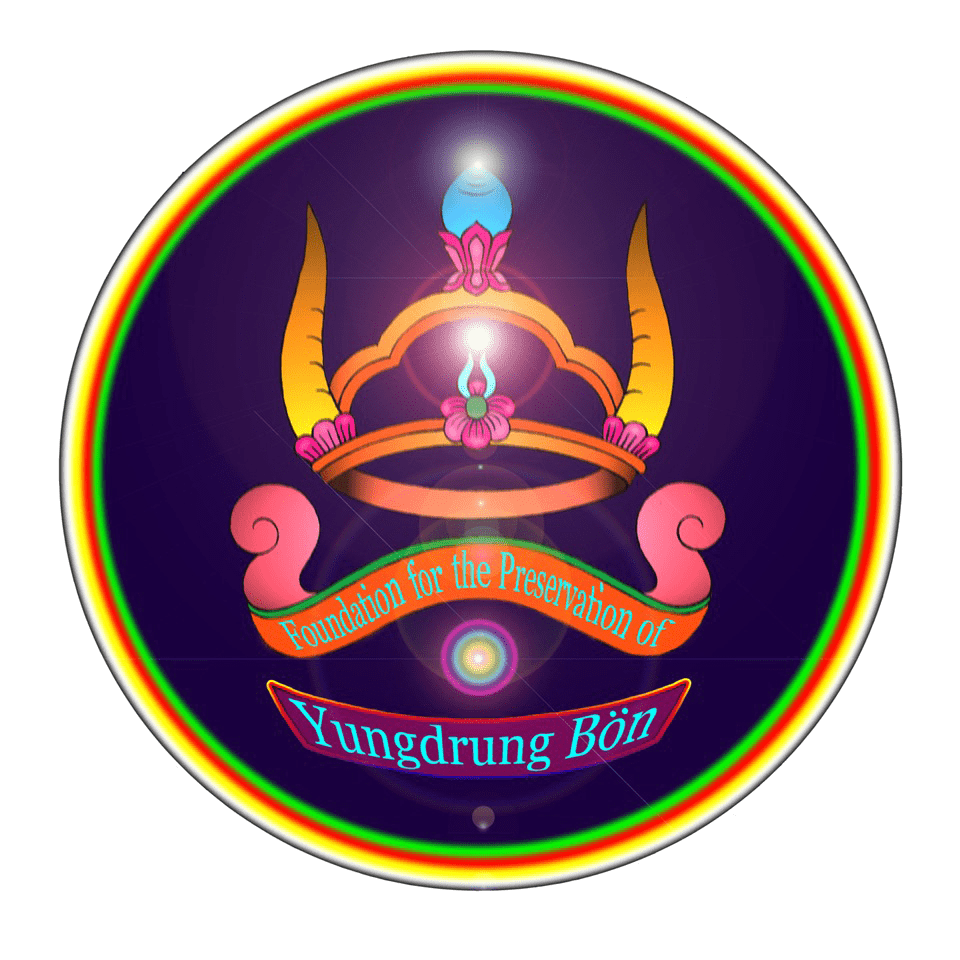Probably everyone who has even a little interest in Tibet knows or has at least heard of the magical contest between Buddhist yogi Milarepa[1] and Bönpo[2] sorcerer Naro Bönchung[3] which is purported to have taken place at Mount Kailash. The tale has been told and retold for centuries in Tibet and beyond to illustrate the superiority of Indo-Tibetan Buddhism over Yungdrung Bön.[4] But does it have any grounding in real events? Did this magical duel really happen on Mount Kailash? And who was the real winner? I will attempt to answer these questions by examining both Bönpo and Buddhist sources on Milarepa as well as by looking into the oral tradition of pachyu ‘shamans’ of the Gurungs (Tamu) in Nepal.
Since this story is well-known, I will not go into the details of the contest itself, and just give you the gist of the story, which is as follows: when Milarepa arrived in the Kailash region he met Naro Bönchung who told him that this is a site holy to Yungdrung Bön and if he, Milarepa, wants to stay here, he must win a contest of magical powers from which Naro Bönchung was sure to emerge victorious. The winner would get to stay while the loser would have to leave the region. After a series of contests on Lake Mapang[5] and Mt. Tise[6] – nowadays mostly known outside Tibet under its Sanskrit name Kailash – Naro Bönchung loses and Milarepa banishes him to a distant mountain, Bönri,[7] from where he can only glimpse Mt. Tise. That is the story in the nutshell. So did this contest actually happen? To answer this question we need to examine the extant sources on Milarepa and Naro Bönchung.
[1] Tib. Rje-btsun Mi-la-ras-pa / རྗེ་བཙུན་མི་ལ་རས་པ།
[2] Tib. bon-po / བོན་པོ།
[3] Tib. Na-ro Bon-chung / ན་རོ་བོན་ཆུང་།
[4] Tib. g.yung-drung bon / གཡུང་དྲུང་བོན།
[5] Tib. Ma-pham g.yu-mtsho / མ་པང་གཡུ་མཚོ།
[6] Tib. Ti-se / ཏི་སེ།
[7] Tib. Bon-ri / བོན་རི།
Jetsün Milarepa
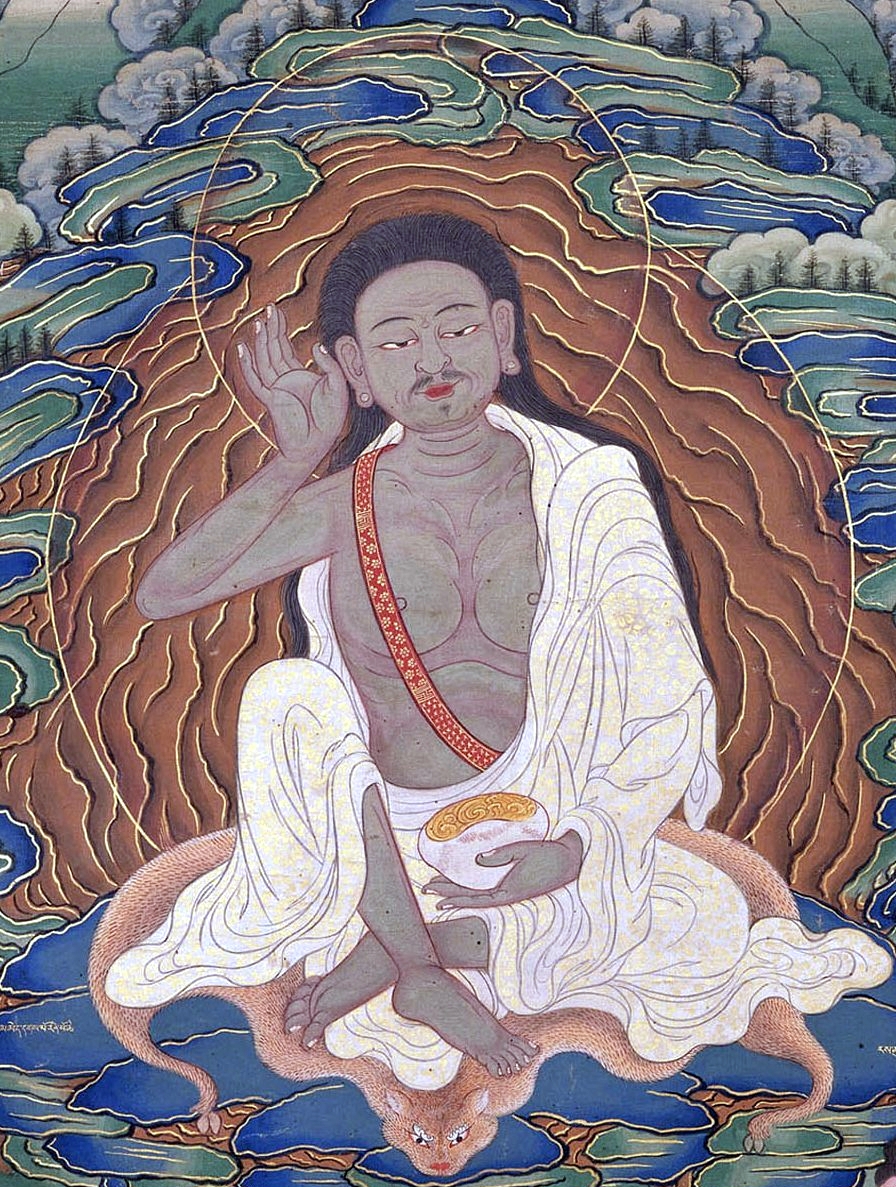
Let us start with Milarepa. Who is Milarepa? What do we know about him and what sources mention his life and deeds?
Milarepa (~1050~1123) was born in the village of Kyanatsa[1] (now called Tsalung), in South Tibet, near the border of modern-day Nepal. He is considered one of the most powerful and holy saints of Tibetan Buddhism, on a par with Guru Padmasambhava,[2] but how much of what we know about his life is fact and how much is legend? The most well-known biography of Milarepa, Mila Namthar,[3] was written in 1488 by Tsangnyon Heruka,[4] the Mad Yogi of Tsang, who complied it by reworking earlier material, around 350 years after Milarepa’s death. Another well-known and slightly earlier biography of Milarepa is found in the Blue Annals[5] compiled by Gö Lotsawa[6] in 1476. And there are several much earlier works by Milarepa’s own disciples Rechungpa[7] and Gampopa,[8] plus that of Gyalthangpa[9] and some others.
[1] Tib. Skya-rna-rtsa / སྐྱ་རྣ་རྩ།
[2] Tib. Gu-ru pad+ma ‘byung-gnas / གུ་རུ་པདྨ་འབྱུང་གནས།
[3] Tib. Mi-la rnam-thar / མི་ལ་རྣམ་ཐར།
[4] Tib. Gtsang-smyong He-ru-ka / གཙང་སྨྱོང་ཧེ་རུ་ཀ།
[5] Tib. Deb-ther sngon-po / དebཐེར་སྔོན་པོ།
[6] Tib. Gos Lo-tsa-ba / གོས་ལོ་ཙ་བ།
[7] Tib. Ras-chung-pa / རེ་ཆུང་པ།
[8] Tib. Sgam-po-pa / སྒམ་པོ་པ།
[9] Tib. Rgyal-thang-pa Bde-chen rdo-rje / རྒྱལ་ཐང་པ་བདེ་ཆེན་རྡོ་རྗེ།
The Milarepa we know today is in many ways not a historical figure but a recreated cultural hero. This is confirmed by the two most thorough researchers specialising in the biographical corpus of Milarepa, particularly the early materials:
“While The Life of Milarepa paints a striking and often fabulous portrait of Milarepa the magician, mendicant, and Buddhist master, we have no independent record of his life from contemporary sources; indeed, we know very little about him as a historical figure at all. Even the dates of his birth and death have long been a source of disagreement among historians, both Tibetan and Western. Tsangnyön Heruka records that the boy was born in the male water-dragon year (1052) and passed away in the wood-hare year (1135) at the age of eighty-four—here using the traditional Tibetan lunar calendar that forms a sexagenary cycle by combining five elements with twelve animals. Other Tibetan sources move these dates back by one or two twelve-year cycles, suggesting instead the years 1040 or 1028 for his birth. Several sources posit his birth as early as 1026 or 1024. Translators of the story outside Tibet have generally agreed upon the dates 1040-1123, although a number of prominent Tibetan scholars of the eighteenth and nineteenth centuries favor the earlier span of 1028-1111.”[1]
And:
“In the first place, apart from a critical investigation of the sources, we cannot hope to be informed about “historical Milarepa.” Even the Tibetan sources questioned some of the stories commonly recounted in the Milarepa biographical tradition. For example, Gos Lotsaba, author of Blue Annals (1476), wrote, “’had written the life-story of Mid-la [sic] in detail, because I had seen many spurious accounts. I believe that [my compilation] corresponds to actual facts.’ ”[2]
[1] Tsangnyön Heruka, Tr. Andrew Quintman, Life of Milarepa: Overview of Milarepa’s Life, Penguin Books, New York, 2010, p. 10.
[2] Tiso, Liberation in One Lifetime, Preface, p. XVI.
Family Lineage of Milarepa
So far we have been looking into Tibetan Buddhist sources but – and this may come as a surprise to some – Milarepa was actually born into a prominent Bönpo family. He grew up and received his early education in a Bönpo environment.
According to Yungdrung Bön texts,[1] Milarepa’s family lineage goes back to one of the Six Holy Clans of Bön,[2] namely the Khyung[3] clan, which produced many great Shenpos,[4] or yogis and teachers of Yungdrung Bön. This branch of the Khyung clan is said to have begun with Mukhyunggyen[5] who emerged in Zhang Zhung[6] from an egg laid by a Khyung bird emanated by Rignang Wögyi Gyalpo[7] the King of the Light Visions of Awareness, who in turn was a manifestation of Kuntu Zangpo.[8] Milarepa’s original name was Mila Thöpa Gawa.[9] His father was Khyungpo Mila Drubpa,[10] also known as Sherab Gyaltsen.[11] Milarepa’s ancestors – Tagra Dontsug[12] and Tonggyung Ringmo[13] – were the two last rulers of Zhang Zhung. Tagra Dontsug ascended the Zhang Zhung throne sometime in the 8th century AD after the last Ligmingya[14] king was assassinated by Trisong Deutsen.[15] Tagra Dontsug’s grandson,[16] Tonggyung Ringmo – who, incidentally, was also a great yogi – was the last to sit on the throne of Zhang Zhung which he inherited from his great grandfather. At the end of his very brief rule there was a coup d’état. Tonggyung Ringmo escaped Zhang Zhung soldiers by transforming into water and merging with the waters of Lake Mai Traringhla[17] in the East of the Tibetan Plateau.[18] So as we can see, Milarepa was a Bönpo by birth and must have been steeped in Bönpo culture. As such, he must have been more than familiar with the difference between Yungdrung Bön and other kinds of Bön, namely various streams of Prehistoric Bön[19] and Mixed Bön[20] before he went to study with Marpa Lotsawa.[21] Furthermore, the Dzogchen[22] master, Rongton Hlaga,[23] who, recognising that Milarepa did not then have the capacity for Dzogchen, sent him to study with Marpa may well have been a Bönpo, too, as suggested by Dan Martin in his The Early Education of Milarepa.[24]
[1] Tib. Shar-rdza Bkra-shis rgyal-mtshan, Legs bshad mdzod /ལེགས་བཤད་མཛོད། ༧ རྩོམ་པ་པོ། ཤར་རྫ་བཀྲ་ཤིས་རྒྱལ་མཚན།
[2] See diagram below.
[3] Tib. khyung / ཁྱུང་།
[4] Tib. Gshen-po / གཤེན་པོ།
[5] Tib. Mu-khyung-rgyan / མུ་ཁྱུང་རྒྱན།
[6] Tib. Zhang-zhung / ཞང་ཞུང་།
[7] Tib. Rig-snang ‘Od-gyi rgyal-po / རིག་སྣང་འོད་གྱི་རྒྱལ་པོ།
[8] Tib. Kun-tu bzang-po / ཀུན་ཏུ་བཟང་པོ།
[9] Tib. Mi-la Thos-pa dga’-ba / མི་ལ་ཐོས་པ་དགའ་བ།
[10] Tib. Khyung-po Mi-la grub-pa / ཁྱུང་པོ་མི་ལ་གྲུབ་པ།
[11] Tib. Shes-rab rgyal-mtshan / ཤེས་རབ་རྒྱལ་མཚན།
[12] Tib. Stag-sgra don-gtsug / སྟག་སྒྲ་དོན་གཙུག
[13] Tib. Stong-rgyung ring-mo / སྟོང་རྒྱུང་རིང་མོ།
[14] Tib. Lig-mi-rgya / ལིག་མི་རྒྱ།
[15] Tib. Khri-srong lde’u-btsan / ཁྲི་སྲོང་ལྡེའུ་བཙན།
[16] According to the lineage description in Legs bshad mdzod / ལེགས་བཤད་མཛོད།, he should be Tagra Dontsug’s grandson but when the text comes to the narration of the coup d’etat in which Tonggyung Ringmo was deposed, it gives the following reason: “sDong-rgyal / སྡོང་རྒྱལ། from upper part of Zhang-zhung and sDong-dmigs / སྡོང་དམིགས། from the lower part said that it was wrong for the throne to be held by an uncle and a nephew[1] and came with an army. [1]sTong-rgyung Ring-mo / སྟོང་རྒྱུང་རིང་མོ། the uncle, sTag-sgra Don-gtsug / སྟག་སྒྲ་དོན་གཙུག the nephew.” See Karmay, Samten G. The Treasury of Good Sayings (Delhi: Motilal Banarsidass Publishers Private Limited, 1972), pp. 13. This is bizarre and illogical in the light of the lineage succession presented immediately before this quotation, from which it should follow that Tagra Dontsug is the grandfather and Tonggyung Ringmo is his grandson: “sTag-sgra Don-gtsug / སྟག་སྒྲ་དོན་གཙུག had a son bTsan-sgra Don-gtsug / བཙན་སྒྲ་དོན་གཙུག; his son was Gyer-nam Zur-rtse / གྱེར་ནམ་ཟུར་རྩེ།; his sons were sTong-rgyung Ring-mo / སྟོང་རྒྱུང་རིང་མོ། and Khyung-rgyal sTag-la skyes / ཁྱུང་རྒྱལ་སྟག་ལ་༌སྐྱེས།.” Ibid. p. 12.
[17] Tib. Rma’i bkra-ring-lha / རྨའི་བཀྲ་རིང་ལྷ།
[18] Ibid. pp. 11-13.
[19] Tib. gdod-ma’i bon / གདོད་མའི་བོན།
[20] Various streams of Bön in which different kinds of Bön are mixed with elements of other religions. For full discussion see: Ermakov, Dmitry. Bѳ and Bön: Ancient Shamanic Traditions of Siberia and Tibet in their Relation to the Teachings of a Central Asian Buddha, (Kathmandu: Vajra Publications, 2008), pp. 129-162.
[21] Tib. Mar-pa Chos-kyi-blo-gros aka Mar-pa lo-tsA-ba / མར་པ་ཆོས་ཀྱི་བློ་གྲོས། མར་པ་ལོ་ཙཱ་བ།
[22] Tib. rdzogs-chen / རྫོགས་ཆེན།
[23] Tib. Rong-ston (‘Bre-ston) lha-dga’ / རོང་སྟོན་༼ འབྲེ་སྟོན་ ༽ལྷ་དགའ།
[24] Martin, D. (1982). The Early Education of Milarepa [digital image], p. 61. http://www.dspace.cam.ac.uk/handle/1810/227083

Naro Bönchung
Now let us look briefly into the other main hero of this story: Naro Bönchung. Who was he and are there any Yungdrung Bön sources for his life and activities? Let’s start with his name. If we carefully examine the etymology of Naro Bönchung’s name, we will realise that it is not in fact a Tibetan name.
Firstly, ‘Naro’ – variously spelled as Tib. Na-ro / Sna-ro ༼ན་རོ། སྣ་རོ།༽ – carries no meaning in Tibetan. The first spelling is a phonetic rendering of a foreign name, possibly of Sanskrit origin or from some other Himalayan language or dialect. The most famous person with this name was, of course, Naropa,[1] student of Tilopa,[2] none other than the patriarch of the Kagyu[3] school. The second spelling of the first part of the name – Tib. Sna-ro – designates the sound vowel ‘o’ in the Tibetan alphabet.
The second part of the name, ‘Bönchung’ – Tib. Bon-chung ༼ བོན་ཆུང་། ༽– means ‘little Bönpo.’ This is derogatory and hardly suitable for a great magician. So it is most probably an invented name. Since we do not find any mention of Naro Bönchung in any Yungdrung Bön sources, we have to conclude that he either did not exist at all or that he was not a follower of Yungdrung Bön but of some other kind of Bön tradition, possibly a Gurung or Tamang priest or a priest of another Himalayan tribal religion, as has been suggested by the Head Teacher of the Yungdrung Bön tradition, Yongdzin Lopön Tenzin Namdak Rinpoche.[4] Since I have already written about the four kinds of Bön extensively elsewhere, I will not elaborate on this here but refer the readers to the relevant pages of my book Bө and Bön mentioned above.[5]
[1] Skr. Nāropadā णारोपदा; Tib. nA ro pa / ནཱ་རོ་པ། (1016-1100, according to Tsangnyon Heruka and (956-1040) according to Peter Alan Roberts, Mahāmudrā and Related Instructions: Core Teachings of the Kagyü Schools, Boston: Wisdom, 2011, p. 14.)
[2] Skr. Talika / Tilopada टलिक, टिलोपद; Tib. Ti-lo-pa / ཏི་ལོ་པ། (988-1069).
[3] Tib. Bka’-rgyud / བཀའ་རྒྱུད།
[4] Tib. Yongs-‘dzin Slob-dpon Bstan-‘dzin rnam-dag Rin-po-che / ཡོངས་འཛིན་སློབ་དཔོན་བསྟན་འཛིན་རྣམ་དག་རིན་པོ་ཆེ།
[5] See footnote 38 above.

The Contest - Tibetan Buddhist Sources
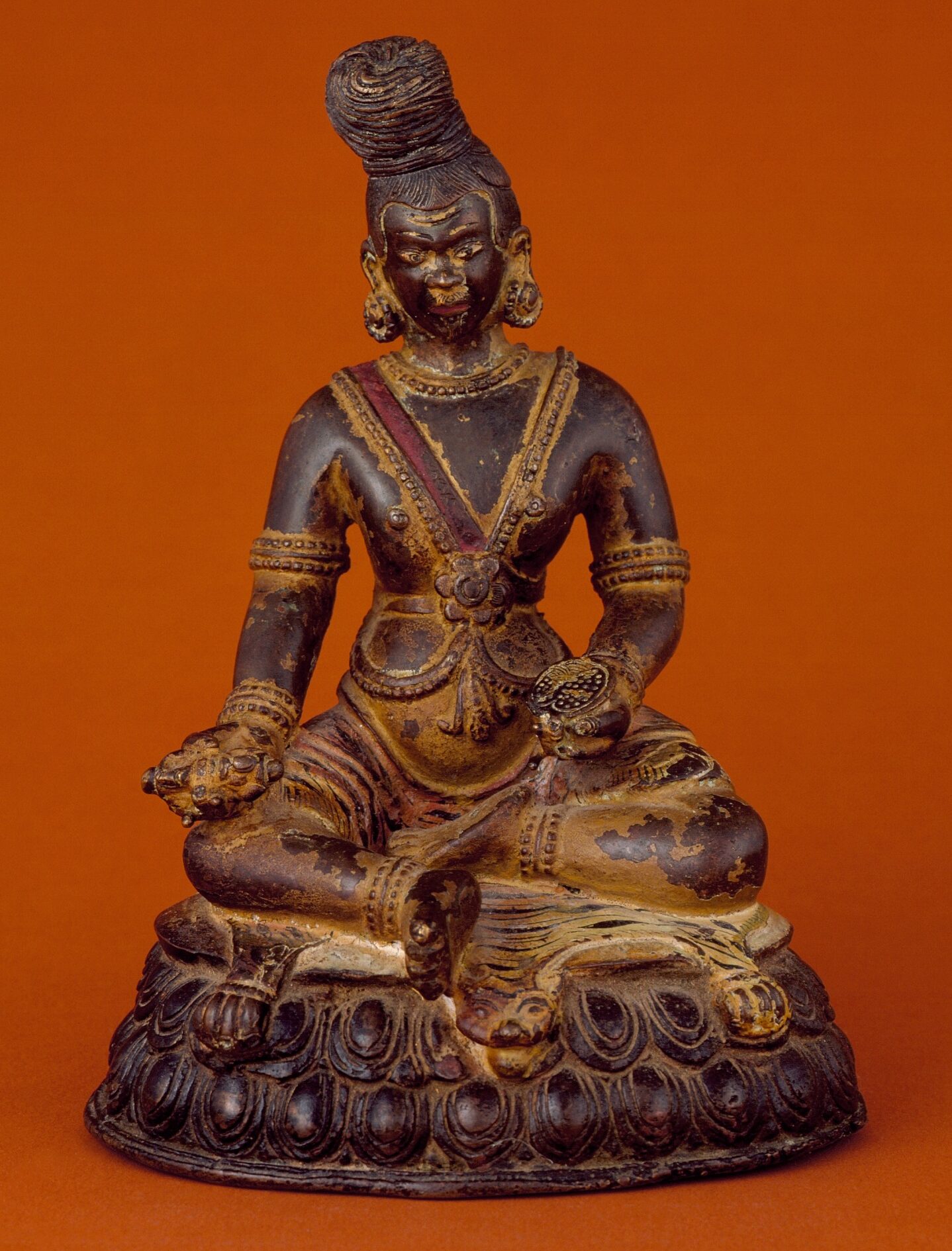
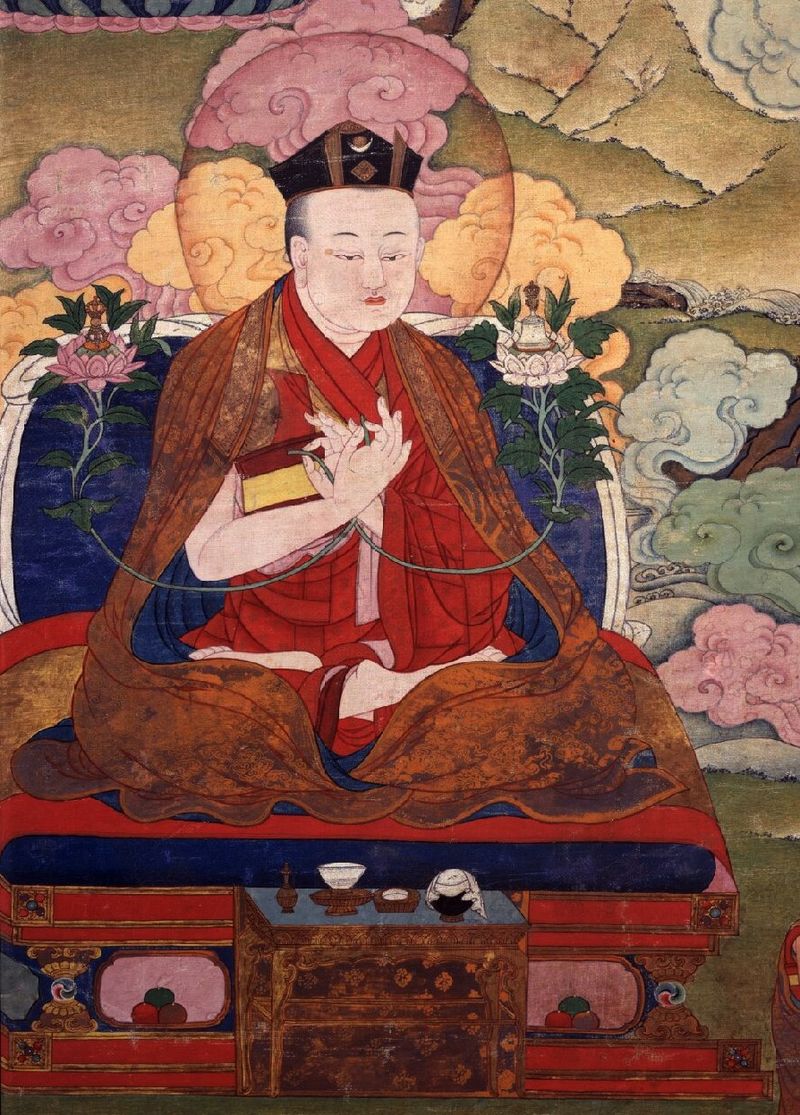
Now let us take a closer look at Tibetan Buddhist sources for this story. The contest between Milarepa and Naro Bönchung does not appear in any early biographies or song collections of Milarepa, not even in those by Rechungpa[1] and Gampopa,[2] his closest disciples and contemporaries. In fact, the first, and very brief, mention of this episode is found in Tib. Mgur ‘bum ༼མགུར་འབུམ།༽, the collection of Milarepa’s songs by the Third Karmapa Rangjyung Dorje (1284-1339),[3] compiled over 100 years after Milarepa’s passing. And, as Dan Martin writes:
“The main thing I wish to point out here is the absence of many polemical elements found in later version of Gtsang-smyon ༼གཙང་སྨྱོན།༽. I do not believe that any of these stories can be accepted as evidence for actual happenings in the eleventh century. Already in the twelfth century, Grags-pa-rgyal-mtshan ༼གྲགས་པ་རྒྱལ་མཚན།༽doubted whether all of Milarepa’s songs were really by Milarepa. No evidence for the existence of a Na-ro Bon-chung ༼ན་རོ་བོན་ཆུང་།༽ as such, is known from the bon side, and it is difficult to account for the name…” [4]
The only other mention of this episode appears in the two works by Tsangnyon Heruka,[5] the Mad Yogi of Tsang, namely, the hagiography of Milarepa (Chapter 11) and the song collection (Chapter 22)[6] both written in 1488 or about 350 years after Milarepa’s death. These are the only Tibetan Buddhist sources for the story. Not even the Drugpa Kagyu[7] versions of Milarepa’s biography seem to include the legendary competition at Mt. Tise,[8] even though this school traces its spiritual lineage directly to Milarepa via his two main disciples Gampopa and Rechungpa.
Interestingly, Charles van Tuyl discovered that Tsangnyon Heruka’s version of Milarepa’s Song Collection also contains direct insertions from Bönpo literature, most notably in Chapters 28-31. He writes:
‘Bonpo terminology is found in the chapters under discussion. Such terminology is also found in other places in Mgur ‘bum ༼ མགུར་འབུམ།༽ – notably, for example, Chapter Twenty-Four. […] One notable Bonpo borrowing in Chapter Twenty-Eight is a poem in four verses. The Bonpo origin of the hymn is shown by the counterclockwise listing of directions. This Bonpo touch cannot be ascribed to a desire for realism, but shows indeed the origin of the poem. The geographical references and the obscurity of language in the poem suggest considerable antiquity.’[9]
This older Bönpo material is found in Milarepa’s songs not because he was battling Bönpos but because he was brought up as a Bönpo and was well-versed in Bönpo culture and certain practices of Causal Bön.[10]
[1] Tib. Ras-chung-pa / རས་ཆུང་པ། (1085-1161).
[2] Tib. Sgam-po-pa / སྒམ་པོ་པ། (1079- 1153).
[3] Tib. Karma-pa Rang-‘byung rdo-rje / ཀརྨ་པ་རྣག་འབྱུང་རྡོ་རྗེ།
[4] Martin, Dan. Unearthing Bon Treasures: Life and Contested Legacy of a Tibetan Scripture Revealer with a General Bibliography on Bon, (Kathmandu: Vajra Publications, 2009), pp. 117-119.
[5] Tib. Gtsang-smyon Heruka / གཙང་སྨྱོང་ཧ་རུ་ཀ། (1452-1507).
[6] Gtsang-smyon Heruka, Rnal-‘byor gyi dbang-phyug chen-po rje-btsun mi-la-ras-pa’i rnam-thar thar-pa dang thams-cad mkhyen-pa’i lam-ston, Rje-btsun mi-la ras-pa’i rnam-thar rgyas-par phye-ba mgur-‘bum / རྣལ་འབྱོར་གྱི་དབང་ཕྱུག་ཆེན་པོ་རྗེ་བཙུན་མི་ལ་རས་པའི་རྣམ་ཐར་ཐར་པ་དང་ཐམས་ཅད་མཁྱེན་པའི་ལམ་སྟོན། རྗེ་བཙུན་མི་ལ་རས་པའི་རྣམ་ཐར་རྒྱས་པར་ཕྱེ་བ་མགུར་འབུམ། ༧ རྩོམ་པ་པོ། གཙང་སྨྱོན་ཧེ་རུ་ཀ།
[7] Tib. ‘Brug-pa Bka’-brgyud / འབྲུག་པ་བཀའ་བརྒྱུད།
[8] According to information kindly provided by Dr. Francis V. Tiso based on his exhaustive research into the early biographical materials on Milarepa’s life which culminated in the publication of Francis V. Tiso. Liberation in One Lifetime: Biographies and Teachings of Milarepa, North Atlantic Books, Berkely, California, 2014.
[9] Charles D. van Tuyl, The Tshe ring ma Account – an old document Incorporated into the Mi la ras pa’i Mgur ‘bum? Zentralasiatische Studien: des Seminars für Sprach- und Kulturwissenschft Zentralasiens der Universitӓt Bonn, 9, Kommissionsverlag Otto Harrasowitz Wiesbaden, 1975, pp. 23-36.
[10] Tib. rgyu’i bon / རྒྱུའི་བོན།
The Contest – Gurung (Tamu) Oral Tradition
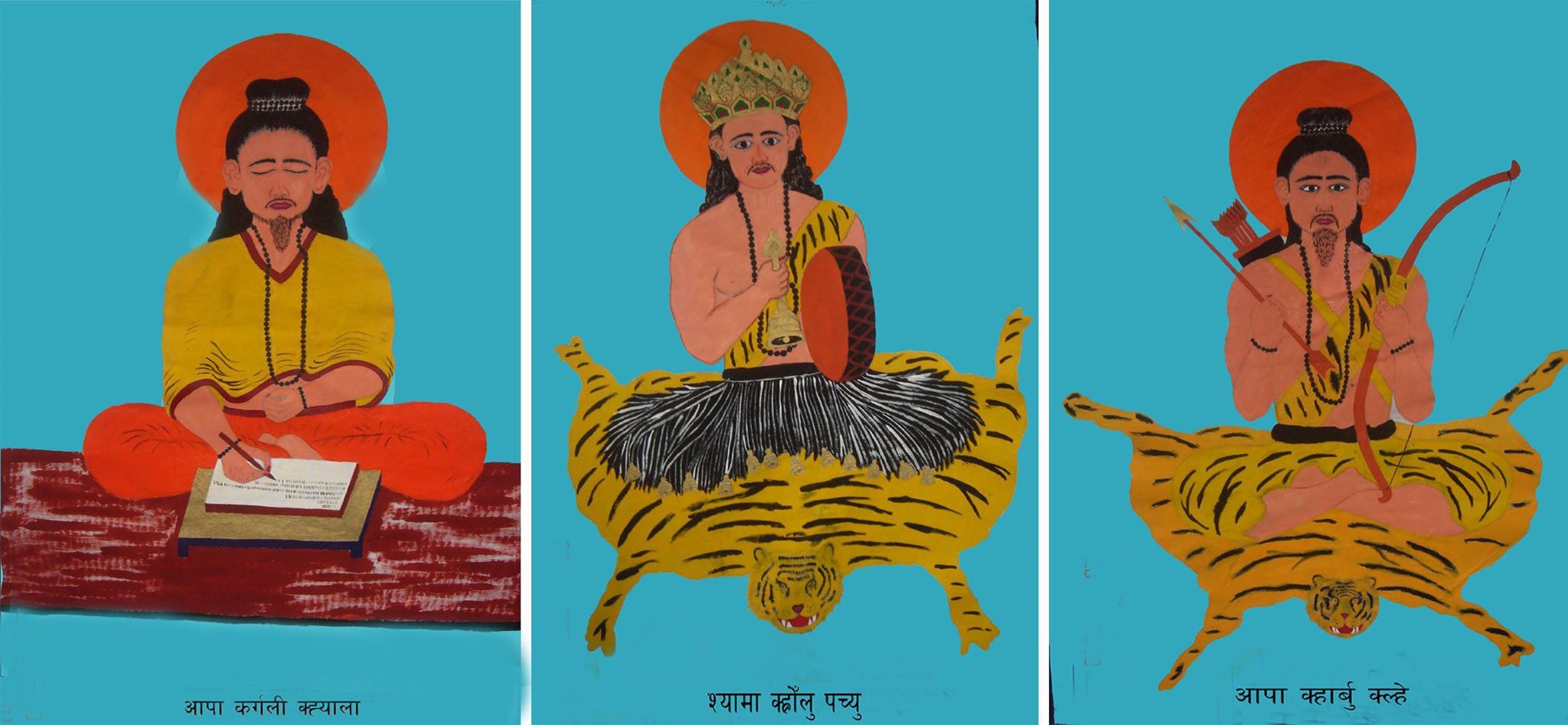
Besides the Tibetan Buddhist sources we have just looked into, the story of this contest is also found in the oral tradition of Gurungs in Gyasumdo, Nepal. This is a tradition pertaining to the category of Mixed Bön with many aspects that can be traced to Domai Bön,[1] i.e. to the Prehistoric Bön which predates Yungdrung Bön as taught by Buddha Tönpa Shenrab Miwo:[2]
“The Gyabrē and Paju shamans unhesitatingly identify themselves with the Tibetan Bönpo […] who ‘lost the contest’ to Milarepa.”
“The Paju in Rangu refers to a time in this region of Nepal when ‘lamas and Pajus competed’ to demonstrate their magical capacities, just as they did in the Milarepa contest legend. There was in Nepal, they claim, a ‘competition place’ in Lubra (…near Muktinath), where the forefathers of the Paju and Gyabrēs had once been trained after migrating into Nepal from Tibet.”[3]
Gurungs (Tamu) are Mongoloid peoples who migrated to Mustang and Nepal around 2,000 years ago.[4] Matching this date with the information from the oral tradition of pachyu and kyabri, we can understand that these sorts of ‘contests’ in magical powers are a very ancient phenomenon which was present in Nepal since pre-history and is not specifically connected with Milarepa.
The village of Lubra,[5] which means ‘Naga Cliff’, named after the rock directly opposite, was established sometime in the 11th century AD by Yangtön Sherab Gyaltsen,[6] a great Bönpo yogi and a lineage holder of Zhang Zhung Nyengyu Dzogchen,[7] who was born in Tsang,[8] Central Tibet in 1077. Since his arrival in Mustang, the Lubra region became exclusively connected with Yungdrung Bön. Gurung pachyu and kyabri left the area for other locations in Nepal, such as Gyasumdo, hence we can conclude that such magical contests were no longer held here.
[1] Tib. gdod-ma’i bon / གདོད་མའི་བོན།
[2] Tib. Ston-pa Gshen-rab mi-bo / སྟོན་པ་གཤེན་རབ་མི་བོ།
[3] Mumford, Stan Royal. Himalayan Dialogue: Tibetan Lamas and Gurung Shamans in Nepal, (Madison: The University of Wisconsin Press, 1989) pp. 52-54.
[4] Gurung, B.C. Bon in the Himalaya, (Kathmandu: Uma Gurung, 2003), pp. 235-240.
[5] Tib. Klu-brag / ཀླུ་བྲག
[6] Tib. Yang-ston Shes-rab rgyal-mtshan / ཡང་སྟོན་ཤེས་རབ་རྒྱལ་མཚན།
[7] Tib. Zhang-shung snyan-rgyud rdzogs-chen /ཞང་ཞུང་སྙན་རྒྱུད་རྫོགས་ཆེན།
[8] Tib. Gtsang / གཙང་།
Contest – Other Parallel Stories in Tibet and Himalayas

Stories of contests in magical powers between proponents of different spiritual traditions abound in Asia, and probably all over the world. This particular legend of the competition between Milarepa and Naro Bönchung is not unique and follows a pattern which can be seen in other stories of this kind in Tibet and in its larger cultural sphere, the Himalayan borderlands. The most famous such story in Tibet is, of course, the 8th century competition between Bönpos and Buddhists held at the court of Tibetan King Trisong Deutsen and which is well-attested in both Tibetan Buddhist and Bönpo sources, but with different outcomes.
Our story, the contest between Milarepa and Naro Bönchung is, in my opinion, constructed along the lines of that 8th century event, and superimposed on the general matrix of similar competitions held all over the Himalayas in which Buddhist saints battled adepts of local tribal religions. This matrix is very well described by Jenny Bentley: in her paper on a similar contest between Guru Rinpoche and Lepcha bóngthíng elder Thikúng Ádik:
“The narrations of competition from different cultural groups all over the Himalayas […] portray the fragile nature of the relationship between local religious traditions and Buddhism, some more openly indicating the greater power of the latter whereas others give validity to both. They open a discourse on themes such as cultural and religious assimilation and subjection, often however, they do not describe a conflict between two incompatible belief systems ending with one suppressing the other, but result in delineating fields of religious competency and ritual activities.”[1]
This is very true for the Milarepa-Naro Bönchung episode as told by the Gurungs as well as for the Lepcha story Bentley discusses. The ending in the Tibetan version of this contest, however, mirrors that of the 8th century contest between Buddhists and Bönpos as attested in Buddhist sources, namely Bönpos are banished and their religion is suppressed.
[1] Bentley, Jenny. “NARRATIONS OF CONTEST: COMPETITION AMONG REPRESENTATIVES OF LOCAL LEPCHA BELIEF AND GURU RINPOCHE IN SIKKIM.” Bulletin of Tibetology, 2009.
Who Won the Contest?
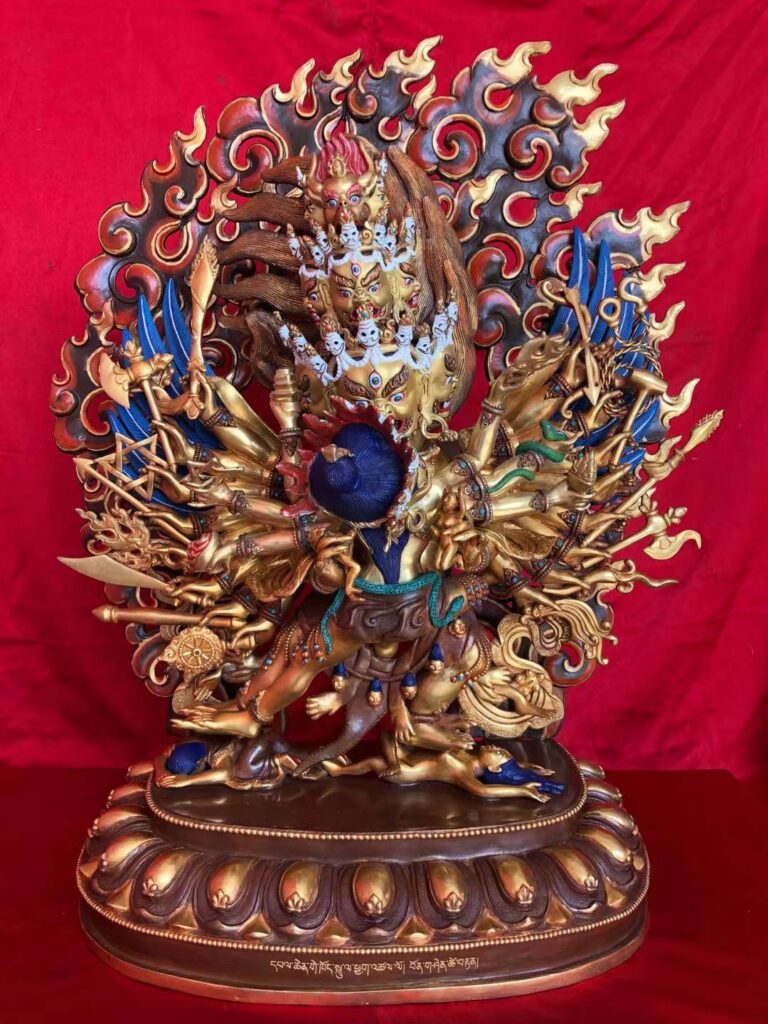
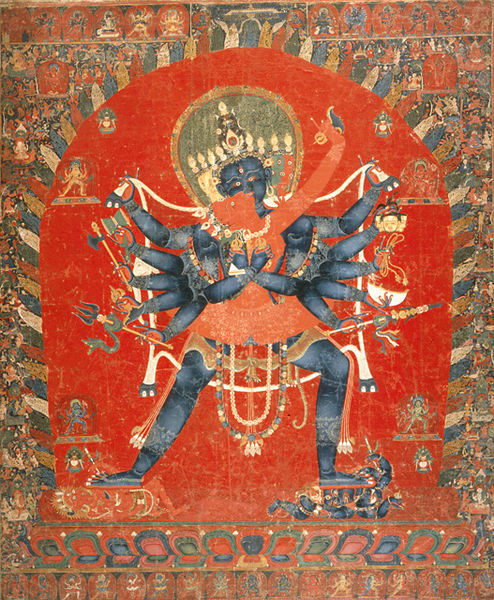
This brings us to the question: Who really won this contest? There are several answers:
Firstly, since this story is not found in the early biographies of Milarepa written by his main disciples and contemporaries Rechungpa and Gampopa, but in fact does not appear until over a hundred years later, it is reasonable to suggest that, as we have just seen, it could have been constructed following a general matrix of similar Tibetan and Himalayan magical duels. This in turn would mean that no contest ever actually took place between Milarepa and Naro, in which case, neither Mila nor Naro could have won.
Secondly, Milarepa travelled extensively and practised in Northern regions of modern-day Nepal, so some contest of this kind may have taken place, but not at Mt. Kailash and not between Milarepa and a Yungdrung Bön yogi but between Milarepa and a Gurung pachyu priest. This hypothesis is supported by the fact that such a contest is found in the Gurung oral tradition. In this this case, Milarepa did win, but his victory did not result in Buddhists taking the control of Mt. Kailash from Yungdrung Bön. Why? Because Gurung pachyus belong to another Bön religion. Even if Milarepa did meet a Gurung pachyu at Kailash itself, the outcome would be the same, and his victory would not signal Indo-Tibetan Buddhism’s victory over Yungdrung Bön.
Thirdly, the real winner in this story is nether Milarepa, nor Naro Bönchung but the Kagyu school of Tibetan Buddhism and the Indo-Tibetan Buddhist establishment as a whole. Tsangnynon Heruka can take the credit here. Why? Because although Milarepa was, no doubt, a great yogi, he was relatively unknown until Tsangnyon portrayed him as a new pan-Tibetan Buddhist hero not so dissimilar to Gesar. Tsangnyon introduced many changes into his version of Milarepa’s biography, changes which were probably dictated by the political necessities of the time coupled with his desire to strengthen and preserve the position of his own Kagyu school in the face of the relentless rise of the Gelugpa school, which backed by Mongol military might, was claiming that their new, revised version of Kadampa Buddhism was pure and indeed superior to all other previous schools of Tibetan Buddhism be they Sarma or Nyingma. The Milarepa depicted by Tsangnyon came to be seen as a kind of successor to Padmasambhava not in terms of lineage but in terms of his activities, i.e. the one who brought about the completion of Tibet’s conversion to Indo-Tibetan Buddhism, a process begun by Guru Rinpoche. Seen in this light, the story of the magical duel at Mt. Kailash plays a very significant part in lending Milarepa this aura of a Buddhist superhero as it ends with Bönpos being banished from their heartland and the Bönpo yidam Yonten Walchen Gekhö being replaced by Demchog, Chakrasamvara, as the deity controlling the La Mountain of Tibet and Zhang Zhung.
This contest is presented in worldly terms as a competition or battle for territory. In our story, Naro is champion for Walchen Gekhö while Milarepa is champion for Chakrasamvara. However, since both yidam-deities are enlightened Buddha-forms, it is simply impossible that they would vie for dominion over a mountain or anything else, for that matter.
To sum up then, this episode is probably one of the most successful anti-Bönpo propaganda narratives in Tibet. It doesn’t matter that this contest did not happen in the way Tsangnyon Heruka described it since, to the Tibetan Buddhist populace, it never-the-less brought closure in the sense that it signalled the completion of what Padmasambhava began, i.e. the triumph of Indo-Tibetan Buddhism over Yungdrung Bön, giving the former a sense of enduring superiority.
Post-conference Note
[It must be mentioned here that, post conference, Dr. Dan Martin brought to my attention his tentative candidate for the persona of Na-ro Bon-chung / ན་རོ་བོན་ཆུང་། from Bönpo sources in Martin, Dan. Unearthing Bon Treasures: Life and Contested Legacy of a Tibetan Scripture Revealer with a General Bibliography on Bon, (Kathmandu: Vajra Publications, 2009), p. 119, footnote 6, where he writes: “There seems to have been a place in Tibet called Sna-ro (see Dalai Lama V 1970-1: I 433.1).” Martin goes on to suggest that a certain Sna-ro / སྣ་རོ། could have been a historic personage linked to one transmission lineage of the first Bönpo gter-ma discovered by three Nepalese a-tsa-ra at Bsam-yas monastery in 913 AD, a discovery which heralded the revival of Yungdrung Bön after the persecution in 8th century AD. Martin cites Kvaerne, Per. ‘A Chronological Table of the Bon Po: The Bstan Rcis of Nima Bstan’Jin’, Acta Orientalia, vol. 33, 1971, p. 228, no.59 (which contains both the Tibetan text and translation of Sangs-rgyas-kyi bstan-rtsis ngo-mtshar nor-bu’i phreng-ba by Sman-ri’i Mkhan-po Nyi-ma bstan-‘dzin / སངས་རྒྱས་ཀྱི་བསྟན་རྩིས་ངོ་མཚར་ནོར་བུའི་འཕྲེང་བ། ༧ རྩོམ་པ་པོ། སྨན་རིའི་མཁན་པོ་ཉི་མ་བསྟན་འཛིན།) which mentions the discovery of this gter-ma / གཏེར་མ།, known as Byang-gter / བྱང་གཏེར།, the Northern Textual Treasure, in the Dpal-gdong / དཔལ་གདོང་། i.e. Water Bird Year of 913 AD. The second citation is from Karmay, S. G. The Treasury of Good Sayings: p. xxix, footnote 2 and p. 121. The former refers only briefly to the discovery of this gter-ma, without mentioning Sna-ro. The later does name a certain Sna-ro who is said to have been one of the disciples of Gze-sgur (Gze-bon) / གཟེ་སྒུར། ༼ གཟེ་བོན།༽, whose uncle Gze-ban Shes-rab rgyal-mtshan / གཟེ་བན་ཤེས་རབ་རྒྱལ་མཚན།, bought the gter-ma in question from the three Buddhists who had earlier obtained it from the three Nepalese a-tsa-ra / ཨ་ཙ་ར། in exchange for a horse and provisions. Gze-sgur had four main disciples: Sa-ston ‘brug-lha, Ston-‘byams sgra-bla-skyab, Dbang and Sna-ro / ས་སྟོན་འབྲུག་ལྷ། སྟོན་འབྱམས་སྒྲ་བླ་སྐྱབ། དབང་། སྣ་རོ།. And it is the latter that Martin suggests might be our guy, although he goes on: “It does seem possible, chronologically speaking, that this Sna-ro could have met Milarepa, but in the absence of further information it would be futile to belabor the issue.” (Ibid.)
I would like to highlight two points that demonstrate why this Sna-ro cannot in fact be a plausible candidate for the Na-ro Bon-chung of the Buddhist accounts of the contest.
Firstly, and most importantly, contrary to Dan Martin’s suggestion, the chronology does not allow for a meeting between Sna-ro, the disciple of Gze-sgur, and Milarepa. Why? Because the gter-ma was discovered and passed onto Gze-sgur in 913 AD while even the earliest date for Milarepa’s birth is 1024, i.e. more than 100 years later. Even if we accept the dating for this gter-ma discovery as 973 AD (as suggested but not referenced by D. Martin, ibid.) it nevertheless still comes to light 51 years prior to this earliest date for Milarepa’s birth. Since Sna-ro, disciple of Gze-sgur, was already an adult when he received the lineage transmission from his master, he is almost certain to have died by the time Milarepa’s contest with the mythical Na-ro Bon-chung allegedly took place.
Secondly, the gter-ma in question contained a great number of texts pertaining to the Bönpo Phur-pa yi-dam cycle / ཕུར་པ། as well as various auxiliary texts on magic and ritual. These were packed in three bags: a tiger-bag, a leopard-bag and a bear-bag. The three Nepalese at-tsa-ra traded texts from the bear-bag to a Bönpo, Mtha’-bzhi ‘phrul-gsas / མཐའ་བཞི་འཕྲུལ་གསས།, in exchange for provisions before they met the three Buddhists to whom they sold the remaining contents. This lineage of Phur-pa is known as Smad-kyi brgyud-pa / སྨད་ཀྱི་བརྒྱུད་པ།, the Lower Transmission. However, the teachings and lineage which Sna-ro received from Gze-gur are known as Stod-kyi brgyud-pa / སྟོད་ཀྱི་བརྒྱུད་པ།, the Upper Transmission of the Dbal-phur nag-po yi-dam cycle / དབལ་ཕུར་ནག་པོ།. According to the accounts by Third Karmapa and Tsangnyon Heruka, however, Na-ro Bon-chung purportedly practised Ge-khod / གེ༌ཁོད།, not Phur-pa. Thus, seen in this light, Sna-ro, disciple of Gze-sgur, cannot possibly be the Na-ro Bon-chung of the Buddhist narrative. It must be noted that the list of texts contained in the bear-bag does include two texts, namely Ge-khod dkar-nag / གེ་ཁོད་དཀར་ནག and Zhang-zhung this-‘phen / ཞང་ཞུང་ཐིས་འཕེན། , which seem to be some kind of auxiliary rituals connected with Ge-khod and his other form Zhang-zhung me-ri / ཞང་ཞུང་མེ་རི། rather than principal ones. Nevertheless, because the bear-bag was first opened by Mtha’-bzhi ‘phrul-gsas, who removed several texts before the rest passed onto Gze-sgur, we cannot say with certainty that Gze-sgur came into possession of these two auxiliary texts and subsequently transmitted them to his students. Furthermore, since both the Upper and Lower Transmissions are connected with the transmission of Phur-pa, while the practice of Ge-khod (i.e. the main tantric cycle practised by the early masters of Zhang-zhung snyan-rgyud rdzogs-chen / ཞང་ཞུང་སྙན་རྒྱུད་རྫོགས་ཆེན། which has never been concealed as a gter-ma) is not mentioned anywhere in relation to them, I think we can safely disregard the hypothesis that Sna-ro, disciple of Gze-sgur, practised Ge-khod as his main yidam. Therefore, I think we can safely say that he is not the Na-ro Bon-chung of the Buddhist account of the contest at Mt. Kailash.]
Bibliography
Aufschnaiter, P. (1976). Lands and Places of Milarepa. East and West, 26(1/2), 175–189. http://www.jstor.org/stable/29756234
Ermakov, Dmitry. Bѳ and Bön: Ancient Shamanic Traditions of Siberia and Tibet in their Relation to the Teachings of a Central Asian Buddha, (Kathmandu: Vajra Publications, 2008).
Tr. Garma C. C. Chang, The Hundred Thousand Songs of Milarepa, Shambhala Publications, New York, 1977.
Gautam, Rajesh and Thapa-Magar, Asoke K. 1994. Tribal ethnography of Nepal. (Delhi: Book Faith, 1994).
Gurung, B.C. Bon in Himalaya (Kathmandu: Mrs. Uma Gurung, Tongi Sadan, Maharajgunj, 2003).
Karmay, Samten G. The Treasury of Good Sayings (Delhi: Motilal Banarsidass Publishers Private Limited, 1972).
Larsson, Stefan. The Literary Works of gTsang smyon Heruka (1452-1507), Himalayan Discoveries, 2013. Vol. 1, pp. 69-87.
Martin, D. (1982). The Early Education of Milarepa [digital image].
Martin, Dan. Unearthing Bon Treasures: Life and Contested Legacy of a Tibetan Scripture Revealer with a General Bibliography on Bon, (Kathmandu: Vajra Publications, 2009)
Mumford, Stan Royal. Himalayan Dialogue: Tibetan Lamas and Gurung Shamans in Nepal, (Madison: The University of Wisconsin Press, 1989).
Tiso, Francis V. Liberation in One Lifetime: Biographies and Teachings of Milarepa, North Atlantic Books, Berkely, California, 2014.
Tsangnyön Heruka, Tr. Andrew Quintman. The Life of Milarepa, Penguin Books, 2010.
van Tuyl, Charles D. The Tshe ring ma Account – an oId document Incorporated into the Mi la ras pa’i Mgur ‘bum?, Zentralasiatische Studien: des Seminars für Sprach- und Kulturwissenschft Zentralasiens der Universitӓt Bonn, 9, Kommissionsverlag Otto Harrasowitz Wiesbaden, 1975, pp. 23-36.
Tshewang, Yungdrung & Kemi Gurung. Lubrak: A Village of the Bon Religion in Mustang. (Self-published booklet).
gTsang smyon He ru ka, rNal ‘byor gyi dbang phyug chen po rje btsun mi la ras pa’i rnam thar thar pa dang thams cad mkhyen pa’i lam ston /
_____________. rJe btsun mi la ras pa’i rnam thar rgyas par phye ba mgur ‘bum.
རྣལ་འབྱོར་གྱི་དབང་ཕྱུག་ཆེན་པོ་རྗེ་བཙུན་མི་ལ་རས་པའི་རྣམ་ཐར་ཐར་པ་དང་ཐམས་ཅད་མཁྱེན་པའི་ལམ་སྟོན། རྗེ་བཙུན་མི་ལ་རས་པའི་རྣམ་ཐར་རྒྱས་པར་ཕྱེ་བ་མགུར་འབུམ། ༧ རྩོམ་པ་པོ། གཙང་སྨྱོན་ཧེ་རུ་ཀ།
མི་ལ་དང་ན་རོ་བོན་ཆུང་སྐོར་ལ་ཅུང་ཟད་དཔྱད་པ།། ༧ རྩོམ་པ་པོ། དགེ་བཤེས་བསོད་ནམས་ཚུལ་ཁྲིམས།་2013
Copyright © Dmitry Ermakov, 2022.
Published by Fondation for the Preservation of Yungdrung Bön, 2022.
